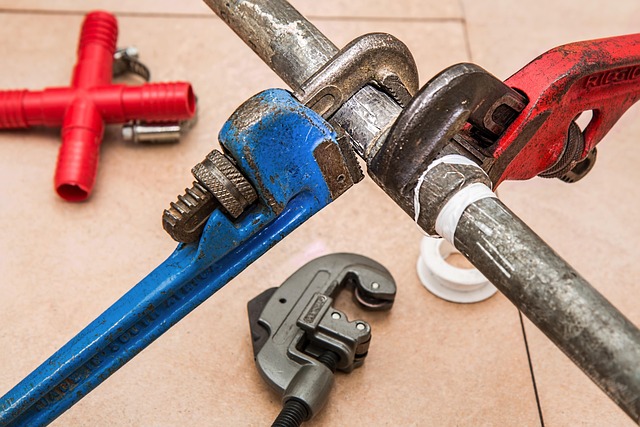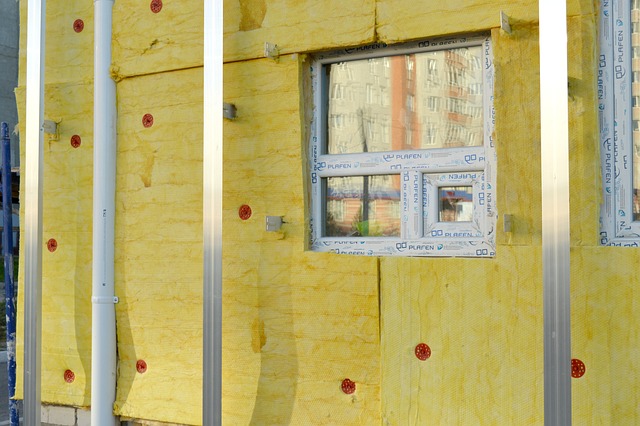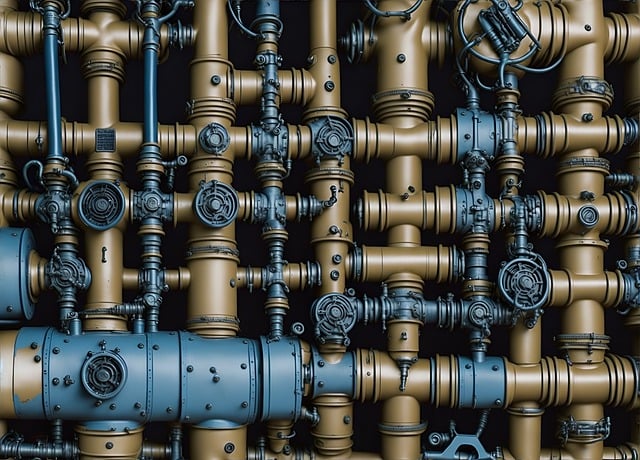Water heater insulation significantly reduces energy consumption, lowers utility bills, especially for outdoor faucets or frequent hot water usage. By creating a barrier against heat loss during winter months, it maintains hot water temperature, enhances efficiency, and saves money. Insulating outdoor faucets and heaters with high-quality materials like fiberglass or foam ensures optimal performance, lower carbon footprint, and long-term savings, particularly in fluctuating climates. Always turn off water supplies before starting, fill all gaps for maximum energy savings, and perform regular maintenance for continued efficiency.
Looking to cut down on your energy bills? Insulating your water heater and outdoor faucets can significantly reduce energy loss, saving you money in the long run. This comprehensive guide dives into the benefits of water heater insulation, explains why it matters, and provides a step-by-step process for an effective do-it-yourself project. Discover suitable materials and learn to avoid common mistakes to ensure optimal energy savings.
- Understanding Water Heater Insulation: Why It Matters
- Benefits of Insulating Outdoor Faucets and Water Heaters
- Identifying Suitable Materials for Insulation
- Step-by-Step Guide to Efficient Water Heater Insulation
- Common Mistakes to Avoid During the Insulation Process
- Long-Term Energy Savings and Maintenance Tips
Understanding Water Heater Insulation: Why It Matters

Water heater insulation is a simple yet effective way to reduce energy consumption and lower your utility bills, especially if you have outdoor faucets or use hot water frequently. By insulating your water heater, you’re essentially creating a barrier that slows down the heat loss from the tank. This is crucial because a significant amount of heat can escape through the tank’s surface, particularly in colder climates or seasons. Over time, this heat loss results in higher energy usage as the water heater works harder to maintain the desired temperature.
Insulating your water heater is a smart move for several reasons. Firstly, it helps preserve the hot water temperature, ensuring that when you use outdoor faucets or turn on a hot tap, the water remains at a consistent and comfortable level. This can be especially beneficial during winter months when cold temperatures can significantly impact water pressure and flow rate. Moreover, proper insulation contributes to a more energy-efficient home, which is not only good for your wallet but also for the environment.
Benefits of Insulating Outdoor Faucets and Water Heaters

Insulating outdoor faucets and water heaters offers significant energy savings, reducing heat loss during cold months. This simple step is a game-changer in enhancing your home’s energy efficiency, especially if you live in regions with varying climates. By insulating these fixtures, you prevent the transfer of heat from the warm water to the exterior environment, ensuring that more heat remains within the pipes and water heater.
This method is particularly beneficial for outdoor faucets often used during warmer seasons when filling up garden hoses or cleaning patios. The insulation maintains the water temperature, avoiding the need for frequent reheating, which can lead to substantial energy consumption. It’s a straightforward yet effective strategy to conserve energy and lower utility bills without compromising on the convenience of access to hot water outside your home.
Identifying Suitable Materials for Insulation

When it comes to insulating a water heater for maximum energy efficiency, choosing the right materials is key. Look for insulation made from high-quality, dense materials like fiberglass or foam. These options offer excellent temperature resistance and can significantly reduce heat loss. For outdoor applications, consider materials that are specifically designed for exterior use, protecting against harsh weather conditions while maintaining insulation integrity.
When selecting insulation, it’s crucial to factor in the size and shape of your water heater, as well as any nearby outdoor faucets or pipes. Ensure the insulation fits snugly without gaps to optimize heat retention. Additionally, check for products that are labeled as effective for tank-type heaters, as these will best accommodate the specific needs of your system, contributing to long-term energy savings and overall efficiency.
Step-by-Step Guide to Efficient Water Heater Insulation

Insulating your water heater can be a simple and effective way to reduce energy bills and lower your carbon footprint. Here’s a step-by-step guide to help you efficiently insulate your water heater, including outdoor faucets.
1. Safety First: Before beginning, turn off the gas or electric supply to your water heater. It’s crucial to ensure no accidental heating occurs during the insulation process. Then, allow the tank to cool down before proceeding.
2. Gather Materials: You’ll need insulation rolls specifically designed for water heaters, a utility knife, tape, and gloves for safety. Choose insulation with a high R-value (resistance to heat transfer) for maximum efficiency.
3. Remove Access Panels: Take off any access panels or covers that hide the heater. This provides easy access to all sides of the tank for proper insulation.
4. Measure and Cut Insulation: Measure the tank’s length, width, and height, then cut insulation rolls to fit snugly around it. Ensure the insulation extends about 6 inches past the tank’s edges on all sides.
5. Install Insulation: Place the insulated rolls against the tank, pressing them firmly into place. Use tape to secure any loose ends, ensuring no gaps remain. For outdoor faucets, insulate them similarly, considering additional weatherproofing if necessary.
Common Mistakes to Avoid During the Insulation Process

When insulating a water heater, avoid common pitfalls to ensure optimal energy savings. One frequent mistake is neglecting to turn off the water supply before beginning the process. This can lead to leaks and waste, undermining your efforts. Always remember to shut off both the cold and hot water taps connected to the heater.
Another error is inadequate coverage or incorrect placement of insulation. Ensure that all accessible surfaces of the water heater tank, including the top, sides, and bottom, are thoroughly insulated with the right materials. Avoid leaving gaps around outdoor faucets or other attachments, as these can create cold spots and reduce the effectiveness of your insulation.
Long-Term Energy Savings and Maintenance Tips

Insulating your water heater can lead to significant long-term energy savings, reducing your utility bills and environmental footprint. Over time, proper insulation minimizes heat loss, especially in colder climates, allowing the heater to maintain optimal temperatures more efficiently. This results in less energy consumption and a longer lifespan for your water heating system.
In addition to insulation, maintaining your water heater is crucial. Regular check-ups and cleaning of outdoor faucets and heating elements can prevent buildup and ensure optimal performance. Keep an eye on any signs of corrosion or leaks, as these issues can lead to inefficiencies and unnecessary energy wastage. By combining efficient insulation with routine maintenance, you can maximize the benefits for your wallet and the environment.
